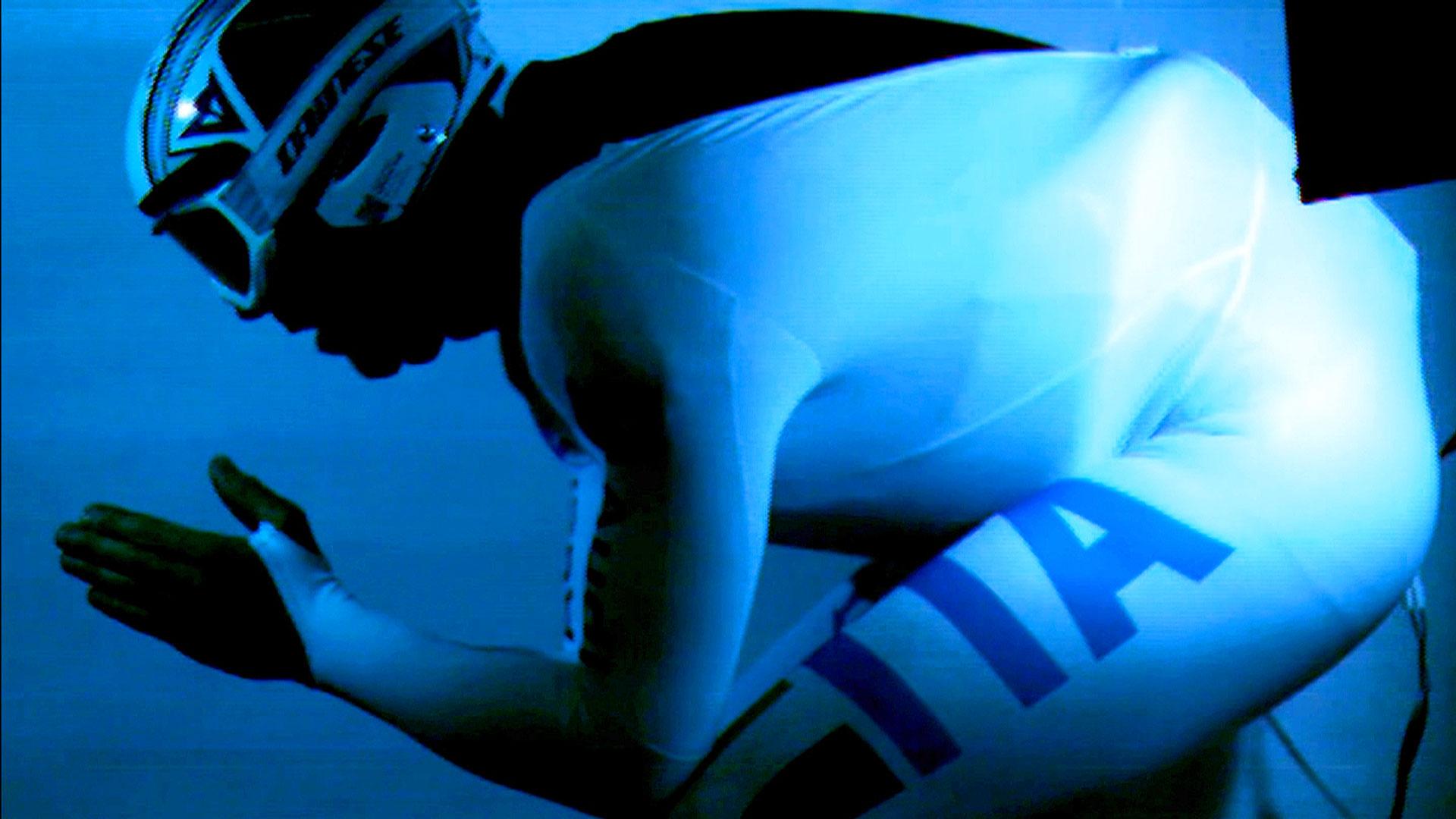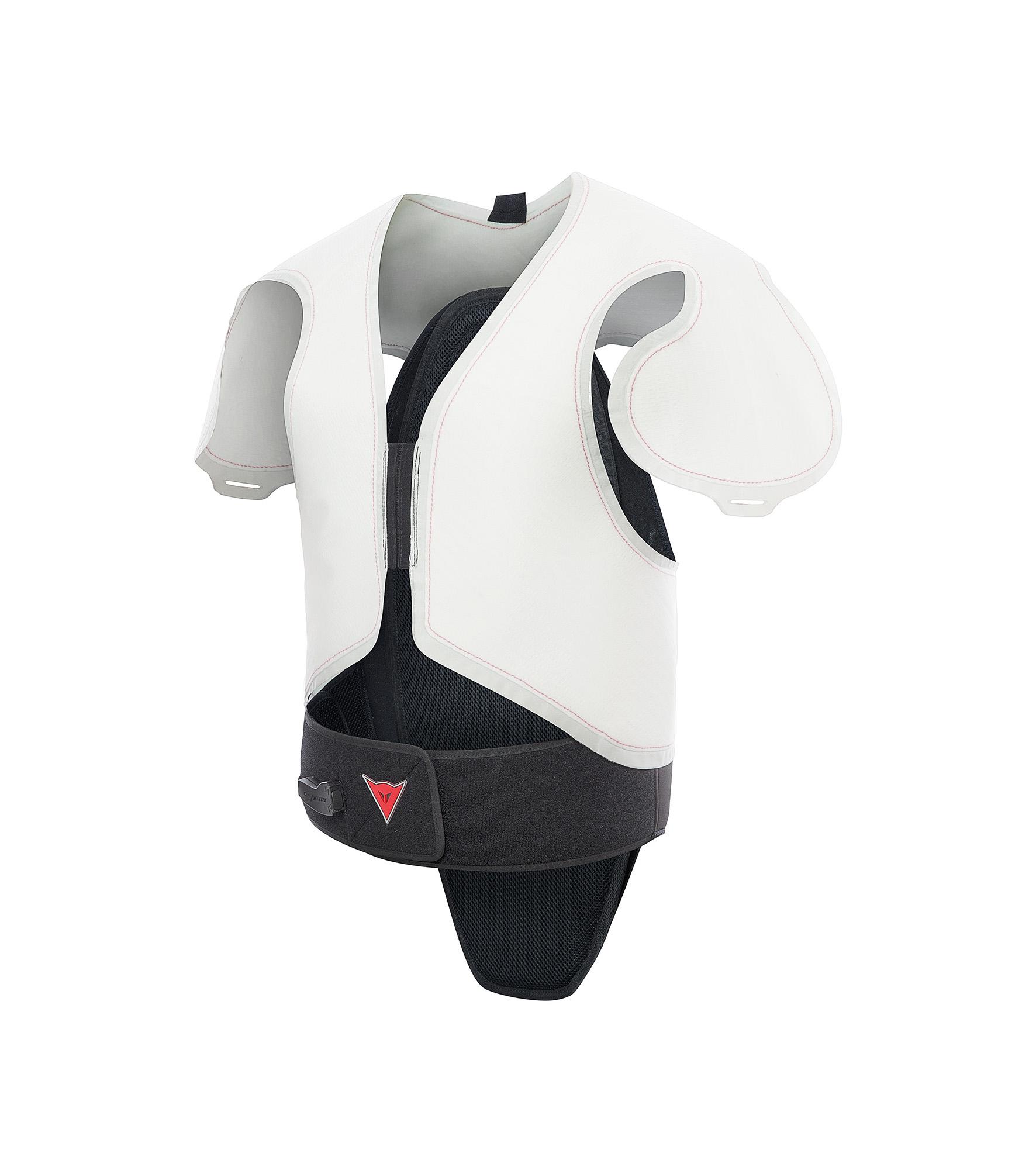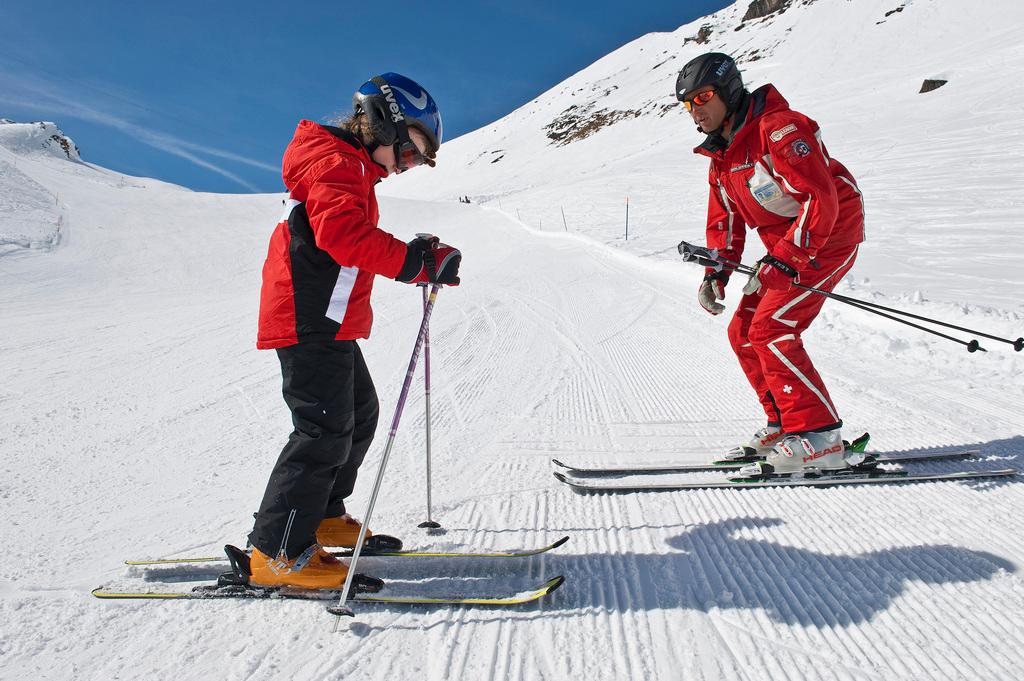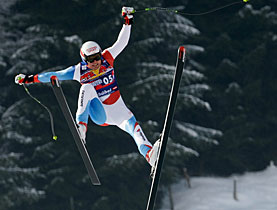Lauberhorn race to host ‘Michelin Man’ skiers?

This week’s legendary Lauberhorn World Cup downhill held in the Swiss ski resort Wengen could see some racers sporting a radical new airbag safety system for the first time. But Swiss athletes are unlikely to be among the early adopters.
“They are all interested and watching which direction it goes,” Thomas Stauffer, head coach of the Swiss men’s team, told swissinfo.ch. Although a few Swiss team members tried the new system last year, skiers and trainers remain cautious.
“The feeling among the athletes is that they don’t have enough data or information to really be sure what’s going on,” Stauffer said.
The International Ski Federation (FIS)External link gave the go-ahead on January 1 for World Cup racers – both men and women – to use a state-of the-art airbag safety system designed to protect the shoulders, collarbone and back.
This Sunday’s LauberhornExternal link downhill is the longest, one of the fastest and most challenging in the men’s alpine race calendar. It’s not known how many – if any – of the 70-plus racers will be wearing the airbag system when they launch themselves down the 4.4-kilometre slope.
The airbag – developed jointly by FIS and Italian company DaineseExternal link – is based on a similar system the manufacturer created for motorcycle racing a decade ago. It features a vest that fits into a racer’s back protector and inflates automatically when they are out of control and about to crash. It is controlled by a complex electronic system including a GPS, accelerometer and gyroscope. When activated by a special computer algorithm, a 4.5-centimetre-long gas generator blows up the airbag in less than 100 milliseconds.
The protective system has been developed over four years together with 16 World Cup racers, including Norwegian Aksel Lund Svindel and Werner Heel of Italy, who carried out over 200 runs to collect data and test prototypes in training.

More
Smart ski airbag
Although the system is not mandatory, the FIS hopes that all World Cup racers will now use it. The US, Canadian, Austrian and Italian teams have tested the airbag either in wind tunnels or on the slopes, but it is uncertain whether any racers will start with it in Wengen.
“I’m encouraging my guys to try it, to get fit for it,” US men’s head coach Sasha Rearick told Associated Press. “The plastic where the airbag is itself is quite stiff. The way it fits is what they’re working on right now, to make sure they can move comfortably with it.”
Heel said he was not ready to race with it just yet as suits needed to be adapted better to incorporate it.
The Swiss team have been slower to react than others. Among Swiss racers, Carlo Janka is the only one to have purchased the system, which costs around CHF1,500 ($1,474). But it is too early to draw conclusions, he told Le Nouvelliste newspaper recently.
“I need to try it in downhill training to give any proper feedback. Afterwards, I don’t think it really affects how we ski,” he declared.
Wait and see
But his Swiss colleagues are less convinced.
“If I want to wear it I’m going to have to change all my suits. And you can’t do that overnight especially when you think of the time it takes for us to get our equipment perfect,” said Didier Defago.
The skier from Morgins said he found the concept interesting but poorly introduced by the ski authorities.
“From a technical point of view it’s a valid idea. But the FIS has managed the communication around the product in a very amateur way. We have hardly received any information about it,” he noted, while questioning why it is being introduced midway through the season.

Swiss skier Beat Feuz echoed Defago’s comments.
“I’m not totally against it but we don’t really know how it works. No one has contacted us,” he added. “We’ll follow the development of the product over the next two years to be sure it works 100%. That’s when I’ll be the first to try it.”
Such reactions annoy Guenter Hujara, FIS technical expert for new projects and former chief race director, who says the athletes have been able to test the system for four years.
“Those who were eager to have the right equipment ready to be used in January did a lot of work and others wait and do nothing and just talk,” he told swissinfo.ch.
“Some are very interested in spreading information that we don’t do enough for safety. They blame FIS after each crash…but we’ve improved safety by 1,000%.”
One concern among racers, on top of fears of a little more wind resistance, is that the system could go off accidentally and turn them into ‘Michelin Man’ on the way down, ruining their chances of victory.
“They say it shouldn’t open on jumps but sometimes you get in awkward positions and can get back on the piste. That’s not when you want it opening,” said Stauffer.
Hujara reassured saying this had been taken care of and the device should only activate when the computer says five parameters are exceeded. But he said he understood racers caution.
“It’s normal. If you are a racer fighting against other competitors and losing or winning by 1/100th of a second, you would not risk this situation by adding a feature which you don’t know the real consequences in terms of aerodynamics or whether it works properly,” he said.
Spectacular crashes
Alpine ski racing is a risky sport which has seen a number of spectacular crashes during the time the airbag system has been worked on.
In 2008 US downhill skier Scott Macartney suffered brain injuries and was kept in a coma after hitting his head on the final jump of the Kitzbühl race in Austria. The same year Matthias Lanzinger from Austria had his lower leg amputated after a bad crash in Kvitfjell in Norway.
The following year Swiss skier Daniel Albrecht had a horrendous crash at the same place as Macartney in Kitzbühl. And in 2011 Hans Grugger of Austria crashed badly on the same course.
In February 2013 US racer Lindsey Vonn tore her right knee during a crash at the world championships in Schladming in Austria.
Despite racers’ reticence, ski officials are confident that the airbag technology will eventually take off. And if it does, knees, which are the most frequent part of the body damaged in ski racing, necks and heads could be next in line for airbag protection.
“This is not the end of the chain. It is just the beginning,” said Hujara.

In compliance with the JTI standards
More: SWI swissinfo.ch certified by the Journalism Trust Initiative



You can find an overview of ongoing debates with our journalists here. Please join us!
If you want to start a conversation about a topic raised in this article or want to report factual errors, email us at english@swissinfo.ch.